Commerce Trust Building; Commerce Bank of Kansas City
Introduction
Text-to-speech Audio
Designed by Jarvis Hunt, the Commerce Trust Building was constructed between 1907 and 1908 by the George A. Fuller Company. The fifteen-story building has maintained most of its historic features, such as its large bronze and copper clock. The building served as headquarters for Commerce Bank of Kansas City, which dates back to 1865 when Francis Reid Long arrived with $10,000 to invest in the growing city. The timing of the bank's founding after the Civil War was ideal as the city was chosen as the terminus of several railroads and included the first railroad bridge connecting this area with Missouri. The bank grew rapidly, and its founders determined to create a new headquarters building in the heart of Kansas City’s growing business district. In 1965, the company constructed the 30-story Commerce Tower at 9th and Main Street and later moved its Kansas City headquarters to 10th and Walnut.
Images
Postcard of the building, labeled here as the National Bank of Commerce Building. Image obtained from Squeeze Box City.
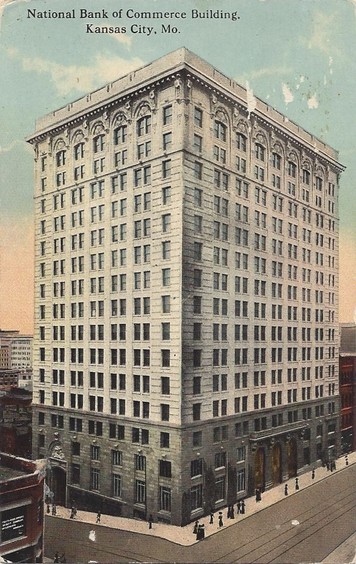
In 1953 a large bronze and copper clock was installed on the southwest corner. It was built by the Livers Bronze Company in conjunction with IBM. Image obtained from flickr.
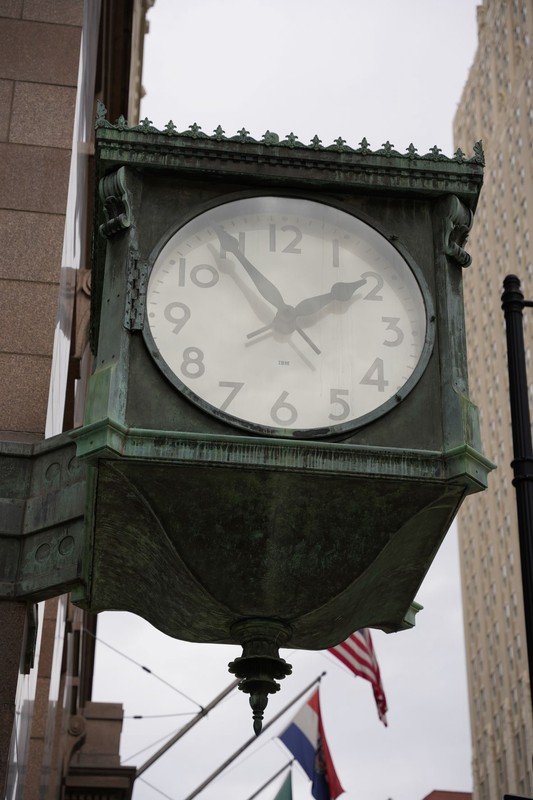
The first floor of the historic building includes a model of the more recent Commerce Bank Building which is located next to this structure
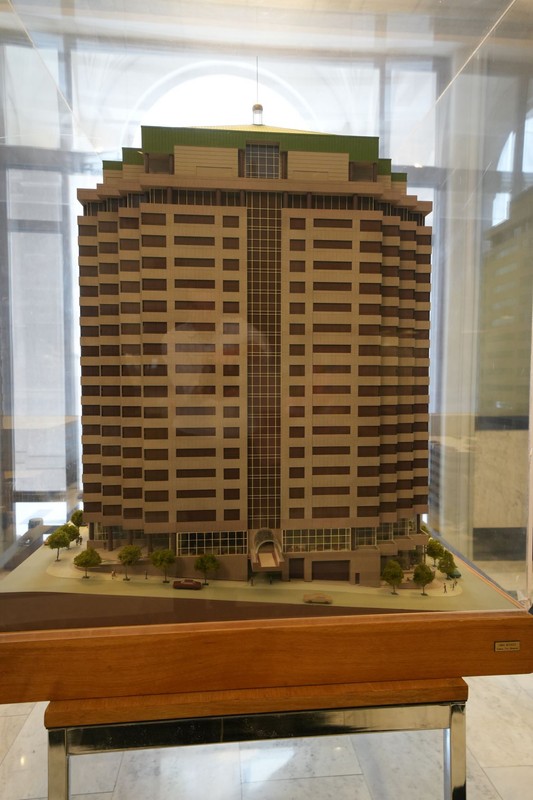
The building's exterior has remained largely unchanged since its construction over a century ago.
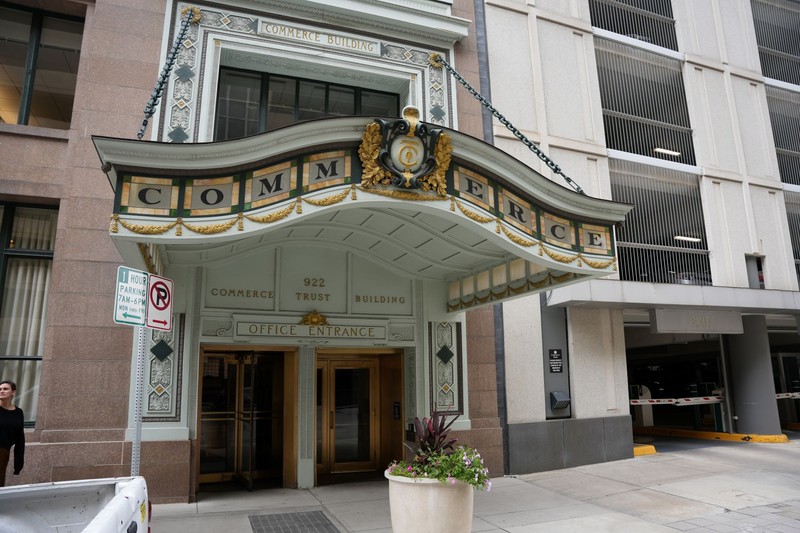
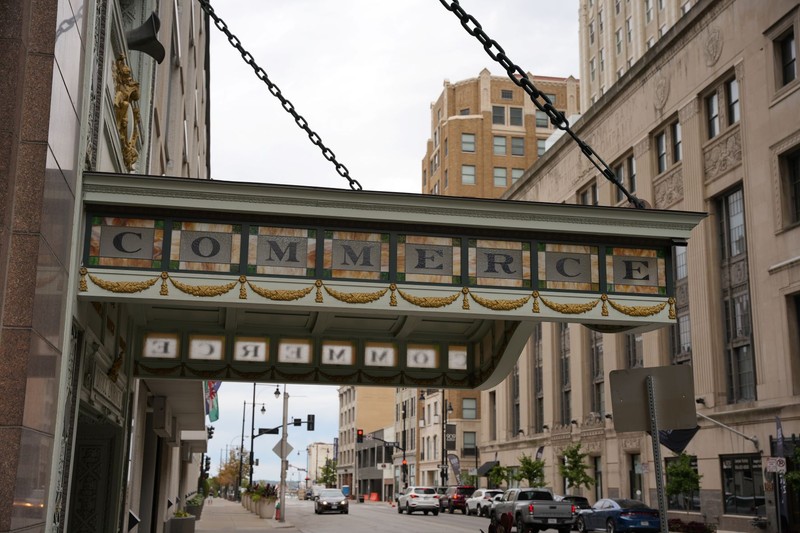
The ornate bank lobby is now utilized for special events
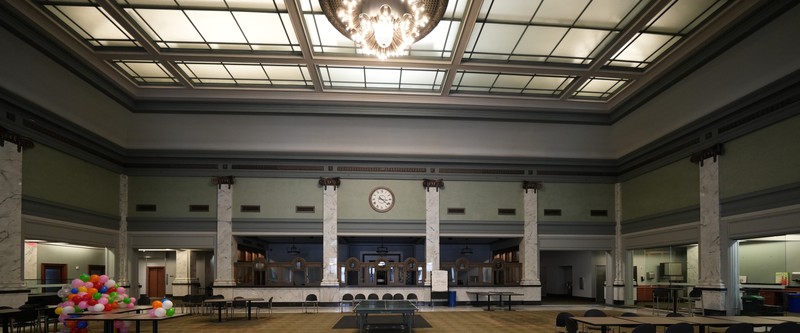
Backstory and Context
Text-to-speech Audio
The origins of Commerce Bank date to 1865 when Francis R. Long founded the Kansas City Savings Association with $10,000. The business grew quickly and became one of Missouri's largest financial institutions. In 1881 Dr. William Stone Woods acquired the business and reorganized the company as the National Bank of Commerce. By 1900, the bank had become one of the largest financial institutions west of Chicago. In 1898, the bank moved into the former Kansas City Journal building on the corner of 10th and Walnut Streets. Future President Harry S. Truman also worked in that building between 1903 and 1905.
In 1906, Woods created a second bank, Commerce Trust Company, and announced plans for the construction of a shared headquarters for the two banks. The former Kansas City Journal building was demolished, and work on this structure began in November 1906. Noted Chicago architect Jarvis Hunt was commissioned to design the building, and the George A. Fuller Company was contracted for the construction.
The fifteen-story building was designed in the Beaux Arts style and was made with granite, Brazilian brick, and terra-cotta. The second skyscraper in Kansas City, the building was constructed with structural steel and was the tallest in Kansas City when it was completed in 1908. The exterior featured elements such as a three-part vertical block scheme and ornamental lion heads. In 1953 a 3,300 pound, cast bronze and copper clock made by IBM and the Livers Bronze Company was installed on the southeast corner. Both companies shared the building; the National Bank of Commerce operated from the lobby facing Walnut Street, while the Commerce Trust Company operated from the 10th Street side.
In 1921, the two banks formally merged and operated under the name Commerce Trust Company. The bank continued to grow, introducing services such as the first 24-hour transit department. In 1965 the company built the nearby Commerce Tower Office Building as part of an effort to redevelop the downtown Kansas City area. Today, Commerce Bank is a subsidiary of Commerce Bancshares which has headquarters in St. Louis and Kansas City and remains the largest banking group in Missouri with hundreds of branches across the Midwest. Commerce continues to utilize the building on 10th and Walnut Street. In 2004, the building underwent a $48 million series of renovations and restorations.
Sources
Millstein, Cydney E. “National Bank of Commerce Building.” National Park Service – National Register of Historic Places. April 5, 1999. Accessed May 15, 2018. https://dnr.mo.gov/shpo/nps-nr/99000530.pdf
Roush, Chris. Building Commerce: Commerce Bank •Strength, Community, Innovation for 150 Years. St. Louis: Essex Publishing Group, Inc, 2015. Accessed May 15, 2018. https://www.commercebank.com/sharedcontent/commerce150/building-commerce-for-150-years-book.pdf
Image 1: www.squeezeboxcity.com/commerce-trust-building/
Image 2: https://en.wikipedia.org/wiki/Commerce_Trust_Building#/media/File:Commerce_Trust_Building_Kansas_City_MO.jpg
Image 3: https://www.flickr.com/photos/25229906@N00/6317103031/
Photo by David Trowbridge
Photo by David Trowbridge
Photo by David Trowbridge
Photo by David Trowbridge
Photo by David Trowbridge
